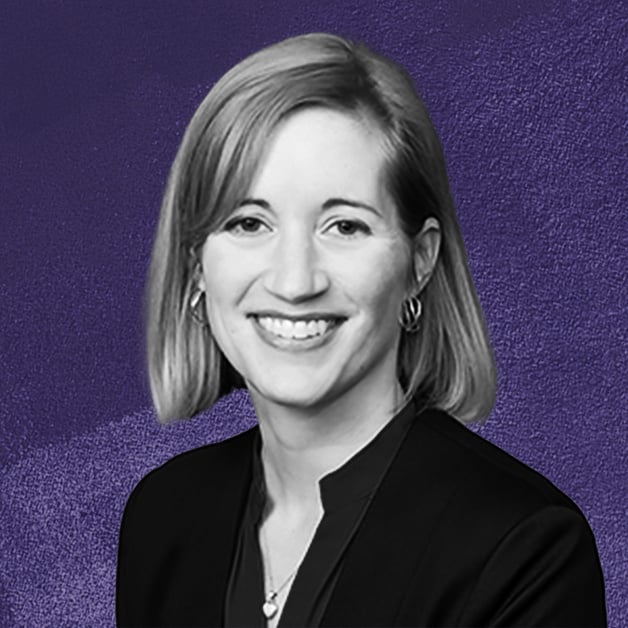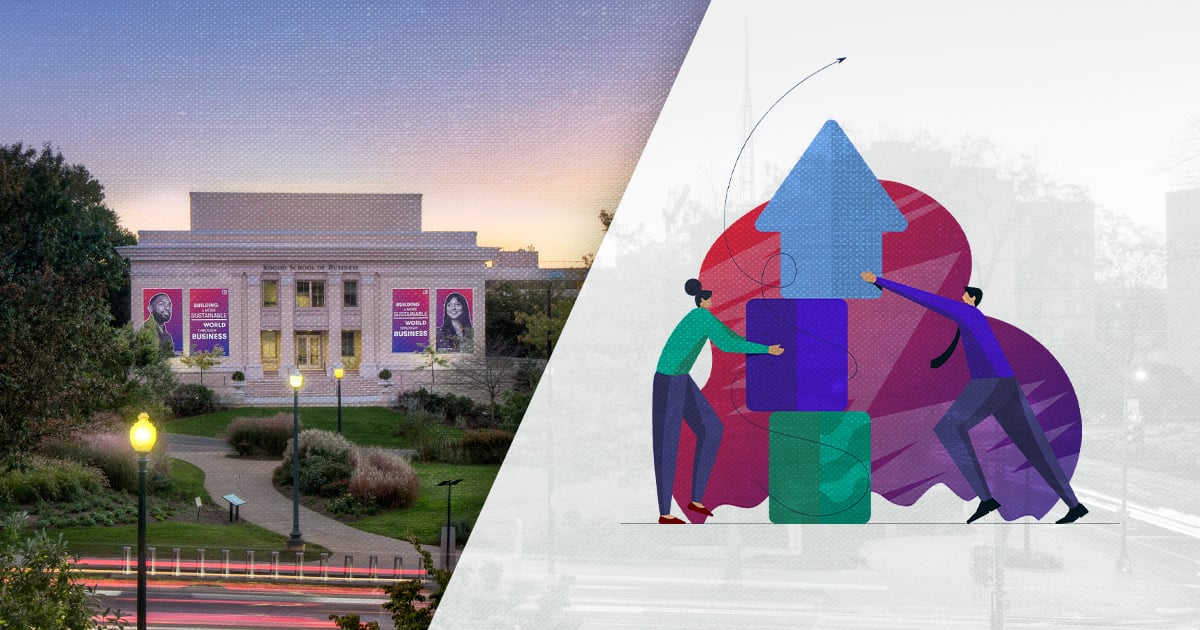
Darby Joyce
Content Marketing Coordinator
The worlds of business and education have both changed drastically in recent years. With career options, technologies, and priorities rapidly shifting, many business schools have needed to evaluate what they teach and how they teach it to ensure that the investment students make in higher education pays off.
These sentiments are among the driving forces that led the Kogod School of Business to undergo a major reform of its undergraduate core curriculum. After over a year of evaluation, course development, and collaborative work, Kogod has unveiled a curriculum that gets students into business courses earlier, develops a more interdisciplinary understanding of business, and provides more opportunities for experiential learning at all stages. Beyond creating coursework better tailored to a business student’s needs, this reform also enables Kogod’s faculty to spend more time utilizing their individual and wide-ranging expertise to prepare students for anything they choose to do after they graduate.
We spoke with Casey Evans, Kogod’s Associate Dean for Undergraduate Programs and Student Services, about the sweeping changes made to the curriculum and what they mean for incoming students and the Kogod community.
Kogod: Tell us about how you devised Kogod’s new curriculum—who was involved, how long did it take, and who did you consult?
Evans: The curriculum reform process was split into three phases. The first was research and recommendations, during which fifteen faculty and key staff members conducted extensive research and utilized the Design Thinking methodology to drive the committee’s activities and recommendations. During the second phase, faculty from the phase one team worked together to draft a new core curriculum. They then worked with other Kogod faculty, department chairs, senior leadership, and the Dean’s office to finalize the curriculum. Finally, phase three entailed developing courses for the new core curriculum. The process took about eighteen months from start to finish.
What makes Kogod’s new undergraduate curriculum unique from other business schools, especially ones in the DC area? What is the value add for future students?
Our students will take business classes much earlier than they would at another business school—and they don't need to apply and be admitted separately to Kogod in addition to their admission to AU. During the first semester, first-year students take three courses designed to help them explore the world of business; in the second semester, they take three additional business courses, including a global practicum, that focus on integrating the world of business. In their second year, students take foundational courses in accounting, marketing, organizational behavior, business finance, operations management, and data analytics. Finally, all Kogod students spend their senior year taking a capstone course on business strategy, which includes live-client projects tailored toward their major.
Our new curriculum changes position our business undergraduate programs as high-quality, distinctive programs with a streamlined, interlinked business core that integrates basic field knowledge with specific skill sets to prepare our students for a highly competitive business career.”

Casey Evans
Associate Dean for Undergraduate Programs and Student Services, Kogod School of Business
Our new curriculum is innovative, flexible, interdisciplinary, and infused with critical topics such as AI, sustainability, and professionalism.
Why did Kogod undergo this massive overhaul?
We’re in a time where it’s crucial for business schools to take the opportunity to change. With the growing cost of college tuition, the ROI (return on investment) expectations of incoming students, and the increased competition between universities for students, the risk of our eventual obsolescence has never been higher. We can’t afford to shy away from change. We created a new, innovative curriculum that will truly enhance our student experience by better reflecting the demands of a changing workplace, the perspectives of Gen Z, and the growing interdisciplinary nature of business.
Who was involved in putting the new curriculum together? How did your team make sure that this process involved a wide variety of perspectives?
Twenty-five faculty members worked on developing the course names, descriptions, learning objectives, and syllabi for the fourteen new courses that comprise the new core curriculum. The process was supported by the fact that most of our faculty agreed that we needed to change and saw a complete reform as a keyway to enhance our students’ experience.
Throughout the process, we consulted eight stakeholder groups: alumni, employers, parents, course coordinators, staff, faculty, and comparable universities. We conducted close to ninety interviews and collected over two hundred survey responses.
We worked closely with many AU offices to make our new curriculum a reality. I’d like to thank our colleagues in the Office of the Registrar, the Provost’s Office, the College of Arts and Sciences, the Undergraduate Education and Academic Student Services Department, AU Core, and the Office of Enrollment for their collaboration, guidance, and support of our new curriculum.
What impact does this have on Kogod’s faculty?
For a long time, faculty have been teaching in a core curriculum that is bloated, siloed, and needed to be better integrated and cross-disciplinary. It was primarily organized by function rather than by outcome. That is not the case with our new curriculum.
In addition to teaching new courses, our faculty will be teaching courses focused on utility—essential cross-functional business skills development—and appeal, or how it can be interesting, engaging, and useful to students.”

Casey Evans
Associate Dean for Undergraduate Programs and Student Services, Kogod School of Business
The student experience will focus on things like how to run a business, how to see business holistically, and how to speak the language of business, all while cutting across disciplines and functions. We will also introduce a company case situation and simulation utilized throughout the core curriculum, which allows students to analyze a problem from multiple angles. Finally, the curriculum includes a practicum at the end of the first year, emphasizing experiential learning as a culmination of all they learned in their first year.
When people in higher education hear ‘curriculum reform,’ what do you think it means to them?
When people in higher education hear ‘curriculum reform,’ I hope they get excited—I know we do! Curriculum reform includes revising learning objectives, integrating new teaching methods, incorporating new technology, and updating course content. In our case, we did all of that and more! We completely revised and reimagined our curriculum to ensure it is relevant, effective, and capable of preparing students for the challenges of the modern world.
